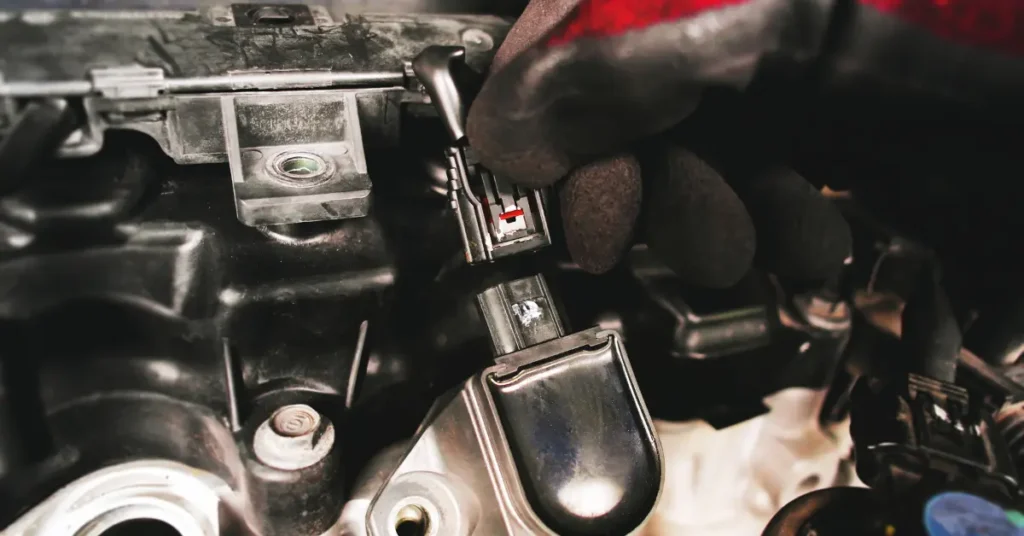
The P0302 Subaru error code is a specific diagnostic trouble code (DTC) that indicates a misfire in cylinder number 2 of the engine. This code is commonly found in Subaru vehicles and can occur due to various reasons. In this article, we will explore the possible causes and solutions for the P0302 Subaru error code.
Contents
Understanding the P0302 Subaru Error Code
When your Subaru’s onboard diagnostic system detects a misfire in cylinder number 2, it triggers the P0302 error code. Each cylinder in the engine has its own spark plug, fuel injector, and other components responsible for combustion. When cylinder number 2 fails to ignite the air-fuel mixture properly, it leads to a misfire.
A misfire in cylinder number 2 can cause several issues with your Subaru’s performance. It can result in reduced power, rough idling, and poor fuel efficiency. Additionally, prolonged misfiring can potentially damage the catalytic converter and other engine components.
Common Causes of the P0302 Code
Several factors can contribute to the occurrence of the P0302 Subaru error code. It is essential to identify and address these causes to resolve the misfire issue effectively. Here are some common causes of the P0302 code:
Ignition System Issues
Faulty spark plugs, ignition coils, or ignition wires can result in a misfire in cylinder number 2. Over time, these components can wear out or become damaged, leading to a weak or inconsistent spark.
Worn-out spark plugs can cause incomplete combustion, resulting in a misfire. It is recommended to replace all spark plugs if one is found to be faulty.
Faulty ignition coils can also lead to a weak spark, causing cylinder number 2 to misfire. Replacing the affected ignition coil is necessary to resolve this issue.
Damaged ignition wires can disrupt the flow of electricity, affecting the ignition process. It is advisable to inspect and replace any worn-out or damaged ignition wires.
Fuel System Problems

A clogged or malfunctioning fuel injector can disrupt the proper fuel delivery to cylinder number 2. Insufficient fuel supply can cause the cylinder to misfire.
Cleaning the fuel injector using a specialized cleaner can help remove any deposits or clogs that may be affecting its performance. However, if the injector is severely clogged or damaged, replacing it may be necessary.
Regularly replacing the fuel filter can also help prevent fuel system issues that may contribute to misfires.
Vacuum Leaks
Air leaks in the intake manifold or vacuum lines can create a lean air-fuel mixture in cylinder number 2, causing a misfire. These leaks can be caused by cracked or disconnected hoses, faulty gaskets, or damaged intake manifold components.
Carefully inspect all vacuum lines and hoses for any signs of damage or disconnection. Replace any worn-out or damaged components.
Inspect the intake manifold gasket for any signs of leaks. If necessary, replace the gasket to ensure a proper seal.
Using a smoke machine to locate hard-to-find vacuum leaks can be an effective diagnostic method.
Engine Mechanical Issues
Problems with the engine’s internals, such as low compression in cylinder number 2, can lead to a misfire. Worn-out piston rings, damaged valves, or a leaking head gasket can affect the combustion process.
Conducting a compression test on cylinder number 2 can help determine if there are any mechanical issues. Low compression readings indicate the need for further investigation and potential repairs.
If a leaking head gasket is identified as the cause of the misfire, it is crucial to have it replaced promptly to prevent further damage to the engine.
Faulty Sensors
A malfunctioning oxygen sensor or mass airflow sensor can provide incorrect data to the engine control unit (ECU), leading to a misfire in cylinder number 2.
Using diagnostic tools, test the oxygen sensor and mass airflow sensor to identify any faults. Replace any faulty sensors to ensure accurate readings and proper engine performance.
Encountering a P0302 misfire in your Subaru can be concerning, but acknowledging that this dilemma is shared among different car models prompts a broader investigation.
Grasping the commonality of misfires fosters a more inclusive understanding, empowering you to navigate through potential solutions effectively.
Diagnosing the P0302 Code Error
To diagnose the P0302 Subaru code accurately, it is recommended to use an OBD-II scanner. This device allows you to retrieve and interpret the error codes stored in your vehicle’s ECU. Follow these steps to diagnose the P0302 code:
Connect the OBD-II Scanner
Locate the OBD-II port in your Subaru, usually found under the dashboard. Connect the scanner to the port and turn on the ignition without starting the engine.
Read the Error Code(s)
Use the scanner’s menu options to read the error codes stored in the ECU. Look for the P0302 code along with any additional codes that may provide more context to the issue.
Inspect the Ignition System

Begin by inspecting the spark plugs, ignition coils, and ignition wires in cylinder number 2. Look for signs of damage, such as cracks, corrosion, or wear. If necessary, replace these components.
Carefully remove each spark plug and examine its condition. Look for signs of fouling, wear, or damage. If any spark plug appears faulty, it is recommended to replace all of them.
Inspect the ignition coils for any visible signs of damage, such as cracks or burn marks. If a faulty ignition coil is identified, it should be replaced promptly.
Check the ignition wires for any signs of wear, such as cracks or exposed wires. Replace any damaged wires to ensure proper electrical conductivity.
Check the Fuel System
Inspect the fuel injector in cylinder number 2 for any clogs or malfunctions. Clean or replace the injector if necessary. Additionally, ensure that there are no fuel leaks in the system.
Use a fuel injector cleaner to clean the fuel injector and remove any deposits or clogs. Follow the manufacturer’s instructions for the best results.
If cleaning the fuel injector does not resolve the issue, replacing it may be necessary.
Check the fuel lines and connections for any signs of leaks. Repair any leaks to ensure proper fuel delivery.
Inspect for Vacuum Leaks
Carefully inspect the intake manifold and vacuum lines for any signs of air leaks. Replace any damaged or worn-out components and ensure proper sealing.
Check all vacuum lines and hoses for cracks, disconnections, or signs of wear. Replace any damaged components.
Inspect the intake manifold gasket for any signs of leaks. If necessary, replace the gasket to ensure a proper seal.
Check Engine Compression
Perform a compression test on cylinder number 2 to assess the internal condition of the engine. Low compression readings may indicate mechanical issues that require further investigation or repair.
Follow the manufacturer’s instructions to conduct a compression test on cylinder number 2.
Compare the compression readings to the specifications provided by the manufacturer. If the readings are significantly lower than the specified range, further inspection and repairs may be necessary.
Test Sensors
Test the oxygen sensor and mass airflow sensor using specialized diagnostic tools. Replace any faulty sensors that contribute to the misfire.
Use diagnostic tools to test the oxygen sensor and mass airflow sensor for any faults or discrepancies.
If any sensor is found to be faulty, replace it with a genuine Subaru part to ensure accurate readings and proper engine performance.
Fixing the P0302 Code in Subaru
Once you have diagnosed the cause of the P0302 Subaru code, it’s time to address the issue and fix the misfire problem. Here are possible solutions depending on the identified cause:
Replace Faulty Ignition Components
If the issue lies within the ignition system, replace the spark plugs, ignition coils, or ignition wires as necessary. Ensure that you choose high-quality components compatible with your Subaru model.
Install new spark plugs that meet the manufacturer’s specifications. It is advisable to replace all spark plugs simultaneously for optimal performance.
Replace any faulty ignition coils with new ones that match the original specifications.
Install new ignition wires that are in good condition and provide proper electrical conductivity.
Clean or Replace Fuel Injector
If the fuel injector in cylinder number 2 is clogged or malfunctioning, clean it using a fuel injector cleaner. In severe cases, consider replacing the injector to ensure optimal fuel delivery.
Use a fuel injector cleaner designed for your Subaru’s fuel system to clean the injector. Follow the instructions provided on the cleaner for the best results.
If cleaning the injector does not resolve the issue, replacing it with a new one may be necessary.
Repair Vacuum Leaks

Repair any air leaks in the intake manifold or vacuum lines by replacing damaged components or using appropriate sealing materials. Ensure proper installation and sealing to prevent future leaks.
Replace any cracked or damaged vacuum lines and hoses with new ones that are compatible with your Subaru model.
Use gaskets and sealing materials recommended by the manufacturer to ensure proper sealing of the intake manifold and other components.
Address Engine Mechanical Problems
If engine compression tests reveal low readings in cylinder number 2, consult a professional mechanic to assess and repair internal engine issues. This may involve repairing or replacing worn-out components.
Seek the assistance of a professional mechanic who specializes in Subaru vehicles to diagnose and repair any internal engine issues.
Depending on the findings, the mechanic may recommend repairing or replacing worn-out components such as piston rings, valves, or the head gasket.
Replace Faulty Sensors
If malfunctioning sensors contribute to the misfire, replace them with genuine Subaru parts to ensure accurate readings and proper engine performance.
Purchase genuine Subaru oxygen sensors and mass airflow sensors that match the original specifications.
Follow the manufacturer’s instructions to properly install the new sensors and ensure they are securely connected.
Conclusion
The P0302 Subaru error code is a clear indication of a misfire in cylinder number 2. By identifying and addressing the underlying causes, such as ignition system issues, fuel system problems, vacuum leaks, engine mechanical problems, or faulty sensors, you can effectively resolve the misfire issue and ensure optimal engine performance.
Remember to consult professional help if needed and choose high-quality replacement parts for your Subaru. Proper maintenance and regular inspections will help prevent future occurrences of the P0302 code and keep your Subaru running smoothly.
FAQ
Q1. What does the P0302 error code indicate?
The P0302 Subaru error code indicates a misfire in cylinder number 2 of the engine.
Q2. What are some common causes of the P0302 code?
Some common causes of the P0302 code include ignition system issues, fuel system problems, vacuum leaks, engine mechanical issues, and faulty sensors.
Q3. How can I diagnose the P0302 code?
To diagnose the P0302 Subaru code, you can use an OBD-II scanner to retrieve the error codes stored in the vehicle’s ECU. You can then inspect the ignition system, fuel system, check for vacuum leaks, perform an engine compression test, and test the sensors.
Q4. How can I fix the P0302 code?
The solutions for fixing the P0302 Subaru code depend on the identified cause. Possible solutions include replacing faulty ignition components, cleaning or replacing the fuel injector, repairing vacuum leaks, addressing engine mechanical problems, and replacing faulty sensors.



